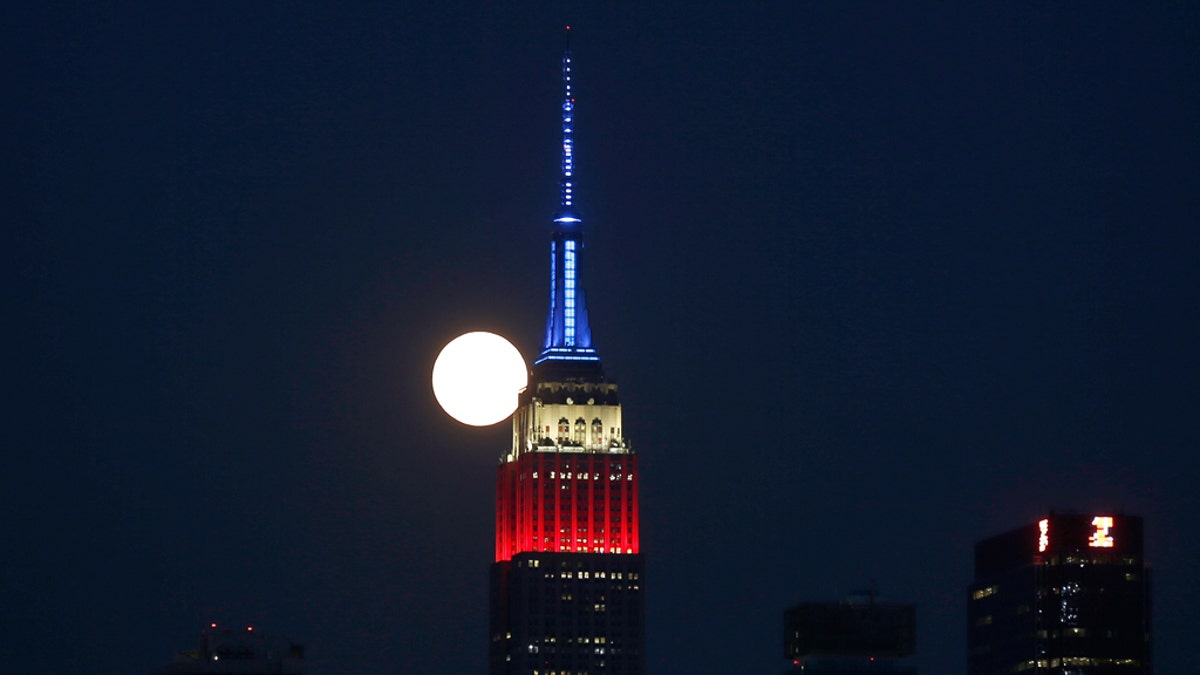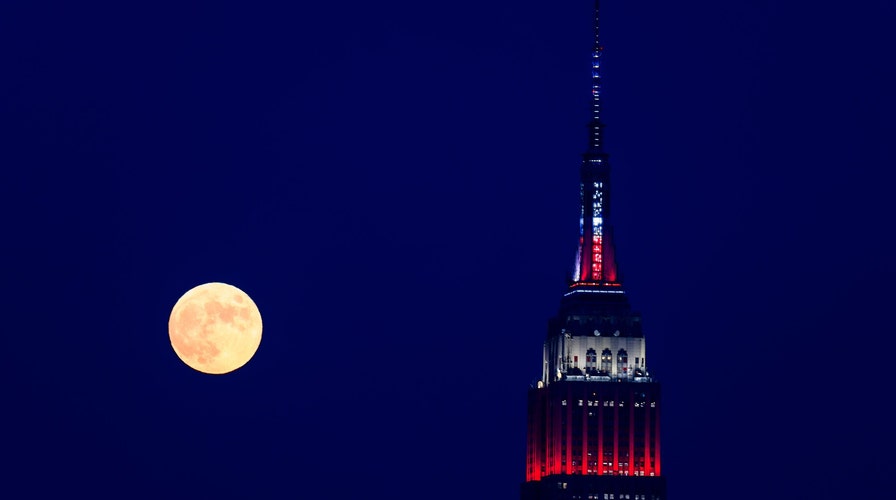50 years after Apollo 11, Neil Armstrong’s sons describe watching their dad walk on the Moon
50 years after the Apollo 11 mission, Neil Armstrong’s sons Mark and Rick describe the day when their father walked on the Moon.
Skywatchers have been enjoying the buck moon or July full moon.
In New York, the moon’s rise coincided with the annual Macy's Fourth of July fireworks show. This year a stunning display illuminated the sky above the Empire State Building.
The moon will appear full through Monday morning, according to NASA.
STUNNING STRAWBERRY MOON THRILLS SKYWATCHERS
The Old Farmer’s Almanac notes the Buck Moon earned its name because it occurs at a time of the year when a buck’s antlers are “in full growth mode.” The July full moon is also known as the thunder moon.

The moon rises past the Empire State Building before Macy's Fourth of July Fireworks Spectacular on July 4, 2020 in New York City. (Photo by Gotham/Getty Images)
The full moon rose on Saturday night and reached peak illumination at 12:44 a.m. ET on Sunday morning.
The full moon was a partial penumbral eclipse. In a penumbral lunar eclipse, part of the Moon passes through the outer part of Earth's shadow, according to NASA.

Macy's fireworks go off on the top of the Empire State Building as the full buck moon rises in the sky on July 4, 2020 as seen from Weehawken, New Jersey. (Photo by Gary Hershorn/FOX News)
SCIENTISTS EXPLAIN 'STRANGE ASYMMETRY' MYSTERY FOR THE FAR SIDE OF MOON IN NEW RESEARCH
Last month, skywatchers across the globe enjoyed the stunning June full moon or strawberry moon. The strawberry moon was also a penumbral lunar eclipse for skywatchers in Asia, Africa, Europe, and Oceania.

Macy's fireworks go off on the top of the Empire State Building as the full buck moon rises in the sky on July 4, 2020 as seen from Weehawken, New Jersey. (Photo by Gary Hershorn/Getty Images)
The May full moon, known as the flower moon, was the last supermoon of 2020.
July is also a good time for seeing Venus and Mercury, according to NASA.
“Wednesday morning, July 8, 2020, will be when the brightest of the planets, Venus, reaches its greatest brilliancy,” it explains, on its website. “Starting the morning of Thursday, July 16, 2020, the planet Mercury will be above the horizon at the time morning twilight begins (at least for the Washington, D.C. area), making all five of the naked eye planets visible (if you have a clear view of Mercury on the horizon in the east-northeast and Jupiter and Saturn on the horizon in the southwest).”

The full buck moon rises behind the Empire State Building on July 4, 2020 as seen from Weehawken, New Jersey. (Photo by Gary Hershorn/FOX News)
CLICK HERE TO GET THE FOX NEWS APP

Full moon is seen at early morning hours over Ankara, Turkey on July 05, 2020. (Photo by Mustafa Murat Kaynak/Anadolu Agency via Getty Images)
The five naked-eye planets are Mercury, Venus, Saturn, Mars, and Jupiter.
Follow James Rogers on Twitter @jamesjrogers





















